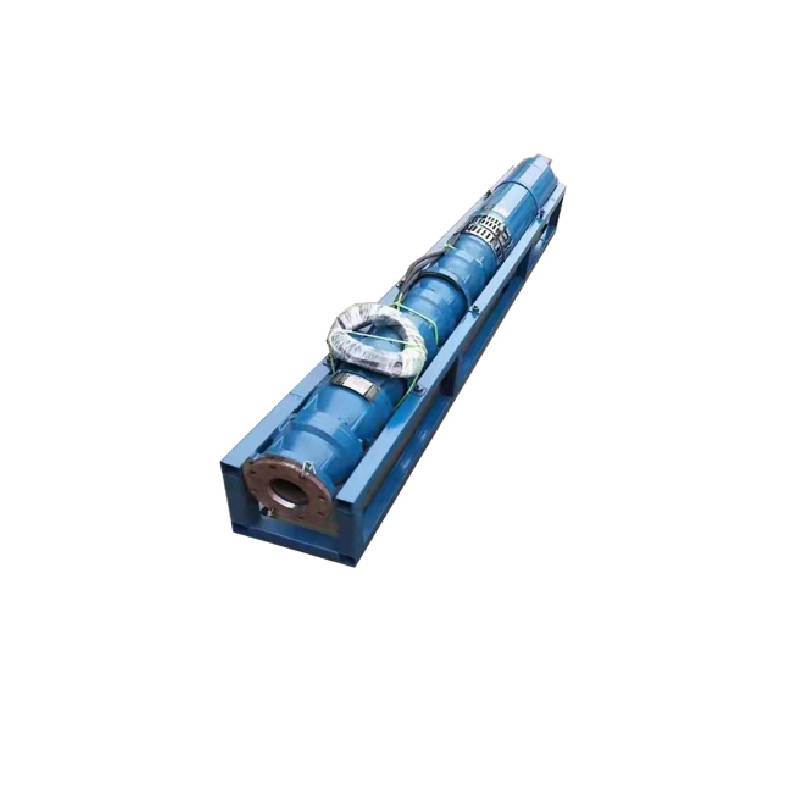10 月 . 06, 2024 16:30 Back to list
oil filled and water filled submersible pump
Oil-Filled vs. Water-Filled Submersible Pumps A Comprehensive Comparison
Submersible pumps are integral components in various applications, including residential dewatering, industrial applications, and agricultural irrigation. When selecting the right submersible pump, one must consider the type of fluid in which the pump is submerged, which significantly influences its performance, durability, and maintenance. Among the most common types of submersible pumps are oil-filled and water-filled pumps. Each has its unique advantages, disadvantages, and suitable applications.
Oil-Filled Submersible Pumps
Oil-filled submersible pumps utilize oil as a cooling and lubrication medium. This method allows for efficient heat dissipation and minimizes wear and tear on the electrical components. The oil serves to enhance insulation, which is particularly beneficial in high-voltage applications. One of the primary advantages of oil-filled pumps is their extended service life due to lower friction levels and reduced overheating risks. They can handle a wide variety of fluids, including corrosive and abrasive substances, making them versatile for industrial settings.
Additionally, oil-filled pumps are designed with robust casings, which offer enhanced durability against external environmental factors. Their construction often includes cast iron or stainless steel, contributing to their ability to withstand various working conditions. However, one should note that oil-filled pumps may require more maintenance than their water-filled counterparts, as leaks can lead to contamination of the surrounding environment.
Water-Filled Submersible Pumps
oil filled and water filled submersible pump

In contrast, water-filled submersible pumps are cooled and lubricated by the fluid they are pumping. This type of pump is generally simpler in design and may be more cost-effective for certain applications. Water-filled pumps are commonly used for clean water applications, such as residential sump pumps, agricultural irrigation, and swimming pool drainage. They excel in environments where the pumped liquid is not abrasive or corrosive.
An inherent advantage of water-filled pumps is their lower initial cost and relatively simple maintenance. Since they are submerged in the fluid they pump, they do not have the same issues with oil leakage as oil-filled pumps. Moreover, the design of water-filled pumps often makes them lighter and easier to install, which is an essential consideration for residential and occasional commercial applications.
However, water-filled pumps can present some limitations. They may not perform well under high-temperature conditions, and prolonged operation without adequate cooling can lead to overheating. Furthermore, their insulation properties are generally inferior to those of oil-filled pumps, which can be a concern in industrial applications requiring high reliability.
Conclusion
Ultimately, the choice between oil-filled and water-filled submersible pumps hinges on the specific requirements of the application. For demanding industrial tasks, where fluid properties can vary, and longevity is crucial, oil-filled submersible pumps tend to be the better choice due to their robust design and performance in challenging conditions. Conversely, for residential or light commercial applications focused on clean water, water-filled pumps could be more appropriate due to their cost-effectiveness and ease of maintenance.
In conclusion, understanding the differences between oil-filled and water-filled submersible pumps will aid in selecting the ideal pump for a given task, ensuring efficiency, longevity, and effective performance. Whether for industrial or residential use, making an informed decision can significantly impact the success of your pumping operations.
-
Your Guide to Deep Well Pumps
NewsOct.31,2024
-
Why Choose a Stainless Steel Deep Well Pump?
NewsOct.31,2024
-
Understanding Water-Filled Submersible Pumps
NewsOct.31,2024
-
Understanding SS Submersible Pumps
NewsOct.31,2024
-
Reliable Submersible Well Pumps for Your Water Supply Needs
NewsOct.31,2024
-
Choosing the Right Submersible Pump for Your Water Management Needs
NewsOct.31,2024
-
 Understanding Water-Filled Submersible PumpsWhen it comes to selecting the right pump for your water management needs, understanding the different types available is crucial.Detail
Understanding Water-Filled Submersible PumpsWhen it comes to selecting the right pump for your water management needs, understanding the different types available is crucial.Detail -
 Guide to Installing a Deep Well Submersible PumpWhen dealing with deep wells, a deep well submersible pump is often the most effective solution for extracting water from significant depths.Detail
Guide to Installing a Deep Well Submersible PumpWhen dealing with deep wells, a deep well submersible pump is often the most effective solution for extracting water from significant depths.Detail -
 Finding the Right Submersible PumpWhen seeking an efficient solution for pumping water from deep wells, sumps, or other applications, the submersible pump is a leading choice.Detail
Finding the Right Submersible PumpWhen seeking an efficient solution for pumping water from deep wells, sumps, or other applications, the submersible pump is a leading choice.Detail
